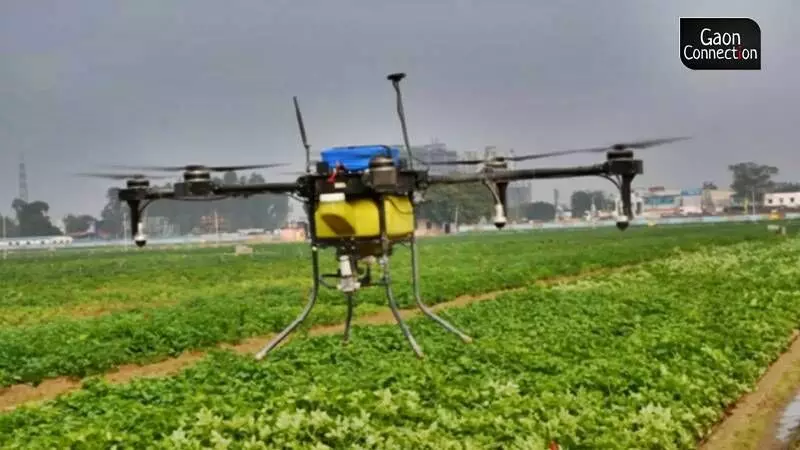How drones help yield better potatoes
Scientists of the Central Potato Research Institute find ways to use drones in cultivation that will alert farmers about the health of their crops, spray agro-chemicals on their fields more effectively and in the process save them valuable time and expenses.
 Divendra Singh 19 Feb 2022 10:54 AM GMT
Divendra Singh 19 Feb 2022 10:54 AM GMT

Technology has begun to play a stellar role in agriculture in India and the government has encouraged its use to increase quality and quantity of yield for farmers.
Scientists of the Indian Council of Agricultural Research (ICAR - Central Potato Research Institute (CPRI) in Shimla, Himachal Pradesh, have experimented with the use of drones in potato cultivation with great success.
At CPRI's regional stations at Modipuram in Uttar Pradesh and Jalandhar in Punjab, scientists started using drones in their research from 2020.
"We were wanting to introduce the use of drones in potato cultivation, but that required adhering to many regulations. We finally got the permission to do so in 2020," Manoj Kumar, Principal Scientist and deputy director, CPRI, Modipuram, told Gaon Connection. Ever since, the drones have been used to spray agro-chemicals on the crops.
The sprays are necessary to keep the potatoes safe from pests and diseases, especially the scorch disease the tubers are particularly vulnerable to. In a season, the potato fields are sprayed at least five or six times, the principal scientist explained.
Drones to spray the fields
Conventionally, farmers use hand-held sprayers or tractor mounted ones to spray their fields. "That is inconvenient as if the fields are wet, it is difficult for the tractors to negotiate their way and there is always the danger of the crops getting damaged. Taking all these into consideration, we realised that the use of drones would be the most efficient way of accomplishing the task, " Manoj Kumar pointed out.
Using tractors or labour to spray the fields is more time consuming and involves more expenses for the farmer. And, there is always the danger of the persons inhaling the chemical fertilisers or pesticides they are spraying.
According to the ministry of agriculture, several states have begun the use of drones in cultivation. "Using drones ensures that the crop in question is being sprayed regularly and completely, even when the fields are wet," Manoj Sharma said.
"Using drones ensures that the plants are thoroughly sprayed from top to bottom. This is not as thorough when spraying is done by hand held or tractor-mounted sprayers," he explained.
The scientists did a thorough study of the use of drones. "We calculated and found out how the drone can spray one hectare of land in twenty minutes and in a day can cover 15 hectares easily. A tractor-mounted sprayer, on the other hand, takes almost the entire day to spray a mere two to four hectares," Manoj Kumar said.
Timely alert
The drone helps in alerting the farmers about their crops, if there are any infestations and if there is any deficiency in nutrients. Being alerted about pest attacks and infestations early enough can help the farmers deal more efficiently and effectively with them and save their crops and thereby prevent losses. "All this leads to saving time, money and ensuring better yields," Manoj Kumar said.
Glad to have witnessed Kisan Drones in action at 100 places across the country. This is a commendable initiative by a vibrant start-up, @garuda_india.
— Narendra Modi (@narendramodi) February 19, 2022
Innovative technology will empower our farmers and make agriculture more profitable. pic.twitter.com/x5hTytderV
The Agriculture Ministry is encouraging farmers to use technology through its Sub-Mission on Agricultural Mechanization (SMAM) scheme. The Government of India has released funds to enable the farmers to do this. The funds will be given as grants to ICAR institutions, state agriculture universities, skill training centres and the Krishi Vigyan Kendras in order to procure the drones.
agricuture
More Stories




